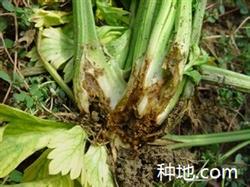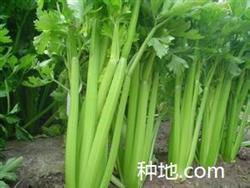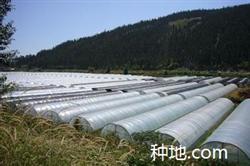How to do celery sclerotinia disease?

What if Sclerotinia disease harms celery? Sclerotinia sclerotiorum of celery can harm leaves, petioles and stems. In general, the leaves are the first to suffer from the disease, showing dark stains and a dense white mildew layer on the surface when it is wet. Then spread downward to cause petiole and stem disease. The injured part was brown and water-stained, and soft rot was formed when the speed was high, and white hyphae grew on the surface. finally, the stem tissue rotted into a hollow fibrous stem, forming a black sclerotia like mouse dung. At present, it has entered autumn, and the temperature difference between day and night is large, which is conducive to the occurrence of the disease. We must pay high attention to it, do early detection, early prevention and control, and reduce losses. The ascospores spread by wind and rain, infecting the old leaves with weak vitality, and the contact between the diseased leaves and the strong leaves and stems can make the hyphae spread. High temperature and high humidity are beneficial to the occurrence and prevalence of the disease. Continuous stubble of celery or cruciferous vegetables prone to Sclerotinia sclerotiorum is easy to occur. Because of poor drainage in rainy season, the disease is serious when nitrogen fertilizer is applied. Prevention and control methods 1. Agricultural prevention and control. Crop rotation has been carried out for more than three years. Disinfect the seeds before sowing. Timely drainage in the rainy season to reduce the humidity in the field. Remove the diseased leaves from the field in time, concentrate and bury them deeply, and strictly prevent the spread of bacteria. two。 Chemical control. At the initial stage of the disease, 70% methyl thiophanate wettable powder was sprayed with 600x solution, or 50% carbendazim wettable powder 1000 times, or 65% carbendazim wettable powder 1000 times, once every 5 to 7 days for 2 times in a row. The above pesticides can be used alternately to avoid drug resistance. More celery planting techniques
- Prev

How to pick celery seeds?
How to pick celery seeds? What do you need to pay attention to? Celery is a cold-tolerant vegetable, which needs a low temperature of less than 10 ℃ before flower bud differentiation and completes the vernalization process in about 10-15 days. However, it must grow to a certain size, about 3 to 4 leaves can feel the low temperature, and the longer the seedlings are at low temperature, the higher the bolting rate. ...
- Next

How to deal with the disaster weather when growing celery in the greenhouse?
How to deal with the disaster weather when growing celery in the greenhouse? When celery is cultivated in greenhouse in winter and early spring, we often encounter disastrous weather such as continuous cloudy days, strong winds, snow, rainfall and so on, resulting in insufficient light in the greenhouse, lower temperature, increased humidity, and aggravated diseases, which seriously affect the photosynthesis and shadow of celery.
Related
- Where is it suitable to grow horseradish in China? it is expected to see the middle altitude horseradish in Alishan.
- How to prevent tomato virus disease reasonably? (Control methods included)
- Many people like to plant towel gourd on the balcony. What are the main points of this method and management?
- What crops can chili peppers be mixed with?
- Fertilization techniques and matters needing attention in Tomato
- What are the grafting techniques for peach seedlings in spring?
- Harm and control methods of root swelling disease of Chinese cabbage
- What are the pests of sweet potatoes? How to prevent and cure it?
- Symptoms, causes and Control methods of navel Rot in Tomato
- The cause of "Cucumber rotten bibcock" in Farmers' planting Cucumber and its Control Plan

